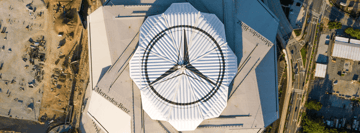How are drones making Christmas deliveries possible in France?
Quite rightly, the focus of most drone delivery companies to date has been medical: blood samples, medicines; even organs have been flown using unmanned systems. And it makes plenty of sense: when every second counts, the speed at which a drone can get from A to B can be the difference between life and death.
Medical drone deliveries have had the greatest impact in scenarios that involve logistical challenges. Zipline’s operations in Rwanda and Ghana, where poor road networks make relatively short journeys time-consuming, are a perfect example.
Similar logistics hurdles exist all over the world of course, whether or not lives are at stake. Which explains why there have also been a number of initiatives set up by technology companies and logistics giants for everyday parcel transportation.
A festive example has just taken off in south-east France, where DPD has launched a new service in partnership with the French postal service in time for Christmas. The new drone delivery route features UAVs that operate as a delivery driver’s “assistant”. The drones are incorporated into a normal delivery round - the only difference is that the vehicle has been equipped with a mobile terminal for take-off and landing.
The system, developed in partnership with French company Atechsys, is being deployed to send small packages from Fontanil-Cornillon up to the isolated village of Mont-Saint-Martin, which is 760m above sea level, just north of Grenoble in the Chartreuse mountains.
La Poste was granted permission by France’s civil aviation authority for the new route because parts of the Isère region in south-east France are notoriously difficult to reach during winter.
The trip from Fontanil-Cornillon to Mont-Saint-Martin is a winding 7km road that usually takes 15 minutes in good conditions. In the winter, when the narrow alpine roads are covered in snow and the path is dark, the route is often impassable and significantly more dangerous. In contrast, the drone, which flies at 30 km/h, takes just 8 minutes to complete the round trip.
At the moment, the delivery drones can carry parcels weighing 2kg. When they arrive in Mont-Saint-Martin, they are deposited by the drone into a secure receiving terminal near the town hall.
The system includes an embedded GPS and real-time trajectory tracking to keep the pilot in the loop at all times, as well as an autonomous parachute and anti-collision system to ensure no gifts are lost on the way up the mountain.
Being able to guarantee parcels will make it despite the road conditions is a positive step for locals. If replicated across the region, having electric-powered drones making last-mile deliveries will save the French postal service time and money while reducing the company’s CO2 emission in what is a protected natural environment.
2019 was a big year for drone delivery. Take a look through some of our favorite success stories here.





